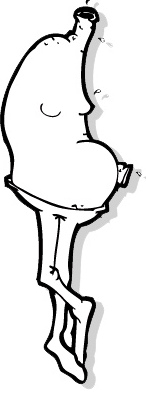Michelin Attempt to be Taste Arbiters in the East
Wednesday, 21 November 2007 by kinakoJam
From an article by Isabel Reynolds, Reuters Press:
Would be nice to know the names and addresses of the Chinese restaurants that they chose to receive a star...fine Japanese-Chinese cuisine is worth walking to the end of the earth for. But with no qualified Chinese food authority in the panel of judges, to what level can we assume Michelin's authority on such matters? Their expertise in all thing French is assumed; is having two Japanese judges enough for them to ordain the best Chinese, Spanish and Italian restaurants in Tokyo? It's all a bit confusing, innit.
Apparently their track record in reviewing Japanese restaurants is not perfect either: one commentator wrote that a Michelin-starred Japanese restaurant in London served food that resembled that at cheap Japanese chain restaurant Yoshinoya. Some chefs and writers have also grumbled about how, in making the Tokyo selection, Michelin have focused on restaurants that serve a range of wines, and of not discerning between the various rarified traditions (such as distinguising between o-sushi and kaiseki) but instead lumping everything together as "Japanese."
A final piece of black humour from 82-year-old Jiro Ono of Sukiyabashi Jiro sushi restaurant in central Tokyo, now the world's oldest three-star chef:
"I never dreamed this would happen. I've just always tried to make good sushi using the freshest fish," Ono said. "But with global warming, our catch is going down. From now on, I will make the best of what resources we have left."
TOKYO - Forget Paris, New York and Rome. The real home of gourmet dining is Tokyo, according to the new Michelin restaurant guide unveiled on Monday.
In its first ever Asian edition, the result of more than a year's research by five undercover inspectors, Michelin awarded more stars in Tokyo than in any other city in the world.
Eight restaurants, five serving Japanese cuisine and three French, were given the coveted three-star rating, which Michelin defines as "exceptional cuisine, worth a special journey."
Twenty-five Tokyo eateries got two stars and 117 were given one star, compared for example with Britain, where only three restaurants in the whole country have three stars and 12 have two.
Some critics and chefs had expressed doubts about whether Europeans were capable of appreciating the finer points of Japanese food, even though two members of the five-strong inspection team were Japanese.
The New York edition of the Michelin guide, first published in 2005, was criticized for favoring French restaurants.
"I think the selection proves the opposite," Naret said. Sixty percent of the starred establishments serve Japanese food, with most of the rest French, plus a handful of Chinese and Italian and one Spanish.
INFORMAL STYLE
Others had said the fact that some of Japan's gourmet food is served at counters in out-of-the way basements might be a hard sell to Europeans expecting more luxurious surroundings.
But Michelin says the star ratings are based purely on what inspectors find on their plates.
Chef Hiroyuki Kanda was shown on television in his modest counter-style establishment, Kanda, throwing his arms in the air and shouting "Banzai!" after hearing he had been awarded three stars.
Tokyo's three-star Japanese restaurants are Hamadaya, Kanda, Koju, Sukiyabashi Jiro and Sushi Mizutani. The three-star French restaurants are listed as Joel Robuchon, L'Osier and Quintessence.
The first Michelin restaurant guide, aimed at chauffeurs in the early days of motoring, was published by the tire company in 1900 and the star rating system was introduced in the 1920s. The organization only took its first steps outside Europe in 2005, with its New York guide.
Michelin remains tight-lipped about which cities will be targeted in future guides -- Naret said only that a second Asian city would be announced in a few months.
Would be nice to know the names and addresses of the Chinese restaurants that they chose to receive a star...fine Japanese-Chinese cuisine is worth walking to the end of the earth for. But with no qualified Chinese food authority in the panel of judges, to what level can we assume Michelin's authority on such matters? Their expertise in all thing French is assumed; is having two Japanese judges enough for them to ordain the best Chinese, Spanish and Italian restaurants in Tokyo? It's all a bit confusing, innit.
Apparently their track record in reviewing Japanese restaurants is not perfect either: one commentator wrote that a Michelin-starred Japanese restaurant in London served food that resembled that at cheap Japanese chain restaurant Yoshinoya. Some chefs and writers have also grumbled about how, in making the Tokyo selection, Michelin have focused on restaurants that serve a range of wines, and of not discerning between the various rarified traditions (such as distinguising between o-sushi and kaiseki) but instead lumping everything together as "Japanese."
A final piece of black humour from 82-year-old Jiro Ono of Sukiyabashi Jiro sushi restaurant in central Tokyo, now the world's oldest three-star chef:
"I never dreamed this would happen. I've just always tried to make good sushi using the freshest fish," Ono said. "But with global warming, our catch is going down. From now on, I will make the best of what resources we have left."
